This Is How Long It Takes To Mine 1 Bitcoin
In theory, it can take ten minutes to mine one Bitcoin based on the block time. But in reality, there are several factors that can affect how long it takes to mine a Bitcoin. For most, it will take hundreds or thousands of days to mine a full Bitcoin.
Key takeaways:
- It is challenging to mine one Bitcoin per day. Using a single ASIC mining rig, an individual could mine around 0.00034 BTC daily.
- Based on our calculation, the average time to mine 1 Bitcoin using a single rig such as the Whatsminer M30S++ is approximately 3,696 days.
- Mining with the biggest Bitcoin mining pool, F2Pool, with an Antminer S19 Pro would take 2,872 days to mine a full Bitcoin.
TABLE OF CONTENTS
The Amount of Bitcoin Can You Mine Per Day
The exact amount of Bitcoin mined per day is around 0.00019 and 0.00034 BTC using a top-shelf ASIC miner. This would take an average of 3,696 days to mine a single Bitcoin. However, the exact amount is heavily influenced by several factors, such as the mining hardware used (i.e., hash rate), the number of rigs, the current difficulty of the network, solo or pool mining, and the electricity cost.
For example, a powerful ASIC like the AntMiner S19 Pro or Whatsminer M30S++ can mine about 0.00034 BTC per day (or USD 8.5 at current prices). An average consumer-end PC will mine much less, approximately 0.00001 BTC per day. Mining Bitcoin on a mobile phone will return even less BTC.

The amount of Bitcoin that can be mined daily using a single ASIC mining hardware device is shown below. Mining pools can mine more Bitcoin per day, however, they will take a cut (typically ~ 2.5% to 3%) in exchange for steady and reliable block rewards. The average amount of Bitcoin that can be mined from the top mining pools is about 0.0003 BTC.
| ASIC Miner | Hash rate | Bitcoin mined per day |
|---|---|---|
| Whatsminer M30S++ | 110Th/s | 0.00034 BTC |
| Whatsminer M32 | 62-8 Th/s | 0.00019 BTC |
| Antminer S19 Pro | 110 Th/s | 0.00035 BTC |
| AvalonMiner 1246 | 90 Th/s | 0.00028 BTC |
| AvalonMiner 1166 Pro | 81Th/s | 0.00025 BTC |
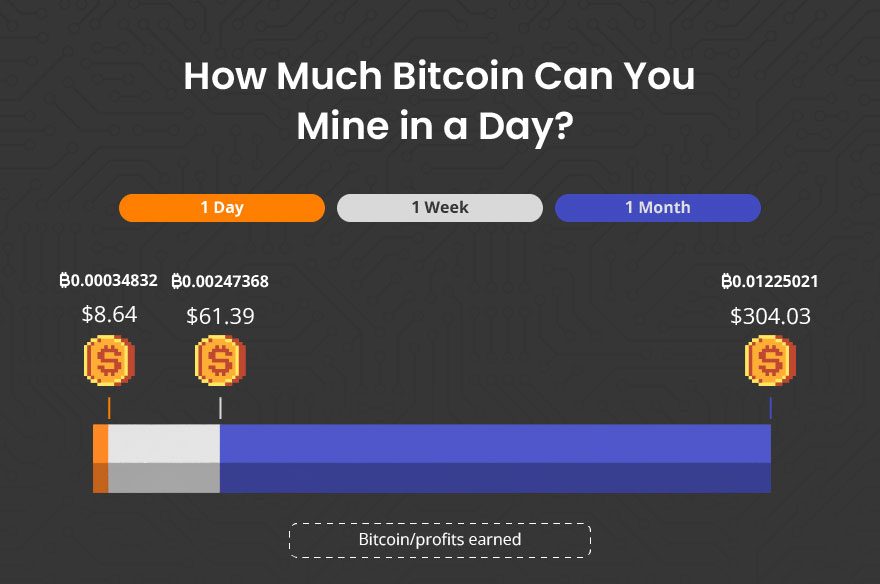
The Maximum Amount Of Bitcoin That Can Be Mined Daily
With Bitcoin’s current block time of approximately 10 minutes and a block reward of 6.25 BTC, the absolute maximum a solo miner could accrue is 900 BTC in a single day. However, there are a significant number of factors that will influence this figure. For example, whether the investor is using a mining pool, the type of compensation for pool members and the power of the mining rig will all make a huge difference to Bitcoin earnings.

This Is The Average Time To Mine 1 Bitcoin Per Day
It can take years for individual miners to mine 1 Bitcoin. Based on our calculations, the average time to mine a single Bitcoin is 3,696 days which is the equivalent of 10.12 years using the best mining hardware from Whatsminer, Antminer, and AvalonMiner. Increasing the number of mining rigs will reduce the number of days, however, this can be costly for individual miners.
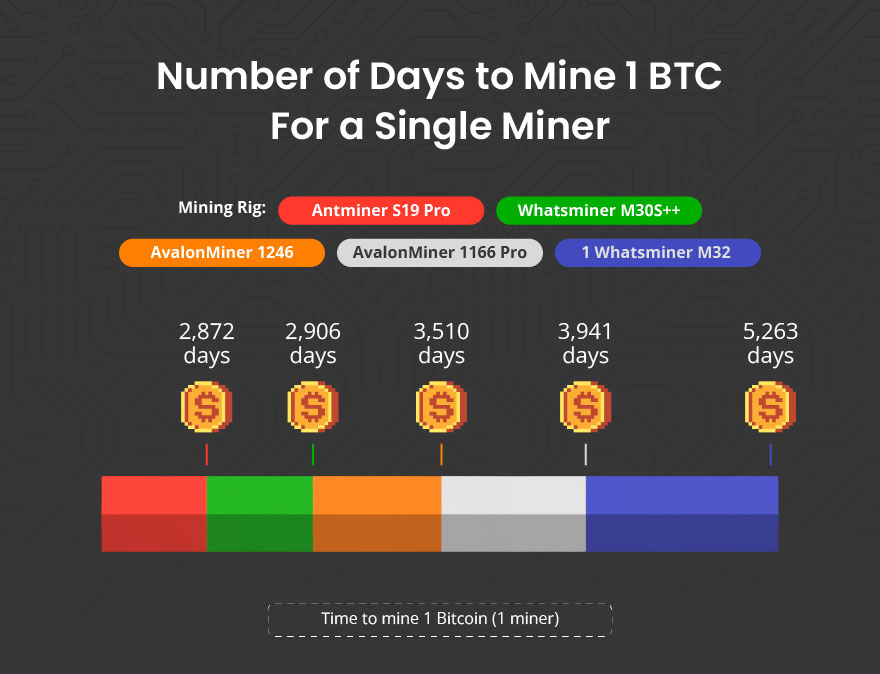
For example, with 100 ASIC mining rigs, the average time is around 36.4 days to mine 1 full Bitcoin. Without joining a pool, individual mining rates are quite poor, even with an expensive rig.
| Mining Rig | Number of days to mine 1 BTC / 1 miner | Number of days to mine 1 BTC / 10 miners | Number of days to mine 1 BTC / 100 miners | Number of days to mine 1 BTC / 1,000 miners |
|---|---|---|---|---|
| Whatsminer M30S++ | 2,906 | 282 | 28 | 2-3 |
| Whatsminer M32 | 5,263 | 526 | 52 | 5 |
| Antminer S19 Pro | 2,872 | 287 | 28 | 2-3 |
| AvalonMiner 1246 | 3,510 | 351 | 35 | 3-4 |
| AvalonMiner 1166 Pro | 3,941 | 394 | 39 | 4-5 |
This Is How Long It Takes To Mine 1 Bitcoin Using A Mining Pool
For most, joining a mining pool is the only viable option to get into the world of Bitcoin mining. Solo mining exposes investors to inconsistent income, whereas pools distribute rewards no matter who verifies the Bitcoin block. However, mining pools often charge a small percentage-based fee that cuts into earnings.

Foundry USA, one of the best Bitcoin mining pools with a 35% market share, can mine 150+ blocks over three days, which is theoretically the fastest pool to mine one Bitcoin. This will have little bearing on an individual miner’s rate of BTC earnings (unless they contribute a disproportionately high amount of hash power). Based on using a single miner, the average time to mine 1 Bitcoin using the Foundry USA mining pool is 3,228 days (or 8.84 years). Increasing the number of mining devices to 10 equates to 330 days to mine a whole Bitcoin and 33 days with 100 rigs connected to the largest mining pool.
| Mining Pool | Average daily reward (USD/BTC) | Number of days to mine 1 BTC / 1 miner | Number of days to mine 1 BTC / 10 miners | Number of days to mine 1 BTC / 100 miners | Number of days to mine 1 BTC / 1,000 miners |
|---|---|---|---|---|---|
| AntPool BTC | $6.31/0.0003 BTC | 3,228 | 322 | 32 | 3 |
| Binance BTC | $6.16/0.0003 BTC | 3,306 | 330 | 33 | 3-4 |
| F2Pool BTC | $6.16/0.0003 | 3,306 | 330 | 33 | 3-4 |
| Foundry USA | $6.31/0.0003 | 3,228 | 322 | 32 | 3 |
| Slushpool | $6.19/0.0003 | 3,290 | 329 | 32 | 3 |
Note. The table above has been calculated assuming the miner is using a Whatsminer MS30S++ as their rig. In this scenario, the Bitcoin miner contributes an average share to each block reward. Please note that these figures are subject to change depending on hash rate, fees, block difficulty, and other factors.
Factors That Determine How Long It Takes to Mine One Bitcoin
There are at least ten factors that can influence how long it takes to mine one Bitcoin.
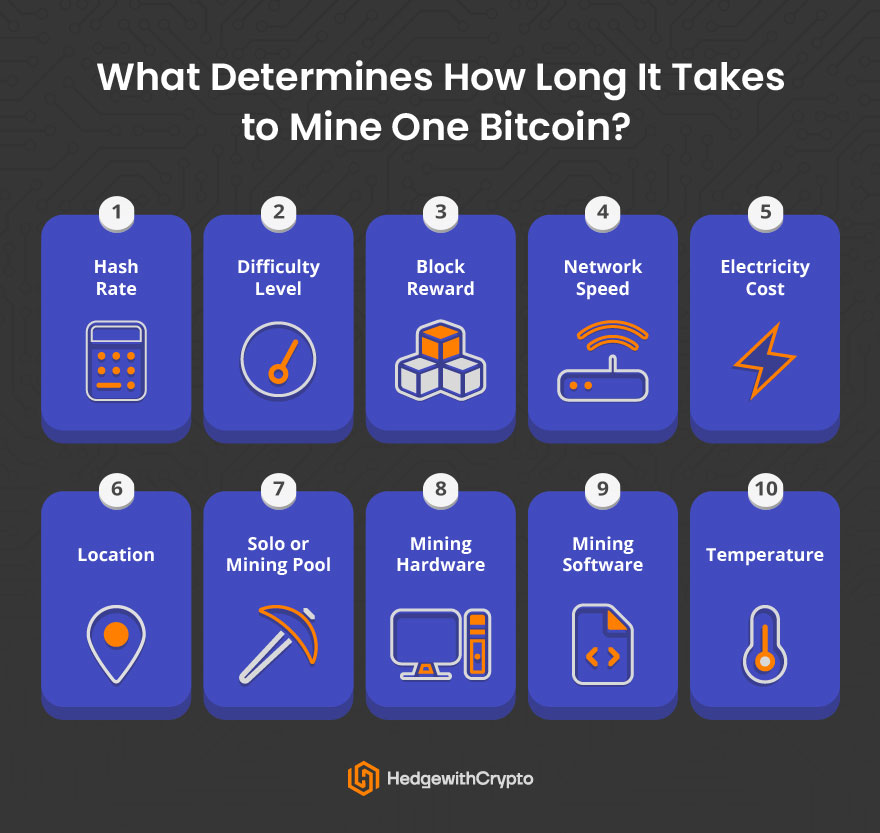
1. Hash rate
Hash rate is a unit of measurement that determines the processing power of a computer or mining hardware relative to a blockchain network. It specifically measures how many calculations can be performed per second. The most common hash rate denominator, “/THs” refers to trillions of calculations every second.
Receiving a block reward when mining Bitcoin is ultimately a game of brute force. Mining rigs have to solve a problem by spitting out as many calculations as possible until they stumble upon the correct answer. Therefore, rigs with superior hash rates (computational power) are going to solve block rewards more frequently and, therefore, mine one BTC faster.
2. Difficulty level
Bitcoin's “difficulty level” constantly fluctuates, measuring how difficult it is for a miner to mine a block. Basically, the Bitcoin network increases the difficulty level proportionate to the number of validators on the blockchain. This is intended to keep the block time and new supply of Bitcoin stable. In simple terms, the more Bitcoin miners are active, the higher the difficulty level and more hash power are required to mine 1 BTC.
3. Block reward
Another unique and significant element of Bitcoin’s coding and self-management of supply is known as Bitcoin halving. Every four years, the reward for mining a new Bitcoin block is cut in half. This is to ensure the coin doesn’t become over-inflated and retains usefulness as a store of value. The current Bitcoin block reward is 6.25, a figure that’s set to halve sometime in 2024 which theoretically reduces how quickly it takes miners to acquire a full Bitcoin.
4. Network Speed
Above-average network speeds don’t play a huge role in how long it takes to mine a Bitcoin. Consumers with decent internet (2-3Mbps+) should have no issue participating in a BTC mining pool.
However, poor network speeds (ping of 100ms+) and frequent dropouts can become major roadblocks for Bitcoin miners. The biggest problem is the Bitcoin blockchain might reject successful block validations if the internet is too slow or drops out at the wrong time, meaning someone else will earn that block reward. Even if mining in a pool, frequent connection hiccups might result in the pool dismissing the user’s shares, resulting in lower payouts for more miners.
5. Electricity Cost
Electricity cost won’t directly affect how long it takes someone to mine a whole Bitcoin. Rather, it might significantly impact their mining strategy based on what’s profitable, and what’s not. While buying a high-tech mining rig is often considered the biggest expense when mining BTC, over a long period of time, it’s actually the electrical cost of running the rig.
The electricity cost for a certain provider can make or break whether a whole mining operation or strategy is effective or not. It can also influence how often someone can leave a mining rig active, which ultimately affects how long it takes to mine a full Bitcoin.
6. Location
A Bitcoin miner’s location can play a big role in mining speeds. At face value, the biggest factor in bitcoin mining is whether BTC or crypto mining is even legal in the miner’s jurisdiction. For example, several Chinese mining farms and similar businesses have relocated to Hong Kong and even Texas after their government banned the practice.
Perhaps more relevant, though, is each country’s differing internet and electricity quality. Certain nations – even those known for being well-developed – may have poor internet speeds or suffer frequent electrical blackouts. This is especially prominent in areas prone to high winds, monsoons, and other common natural disasters. Inconsistent internet paired with frequent dropouts can significantly hamper mining speed – especially for a solo miner using an expensive rig.
7. Solo or mining pool
A miner without special hardware that doesn’t meet certain parameters (e.g., cheap internet or electricity) will almost certainly join a pool rather than go solo. A mining pool will usually mine a full Bitcoin much faster than a single miner, as their weight of numbers gives the pool a greater chance of solving the blockchain’s hash.
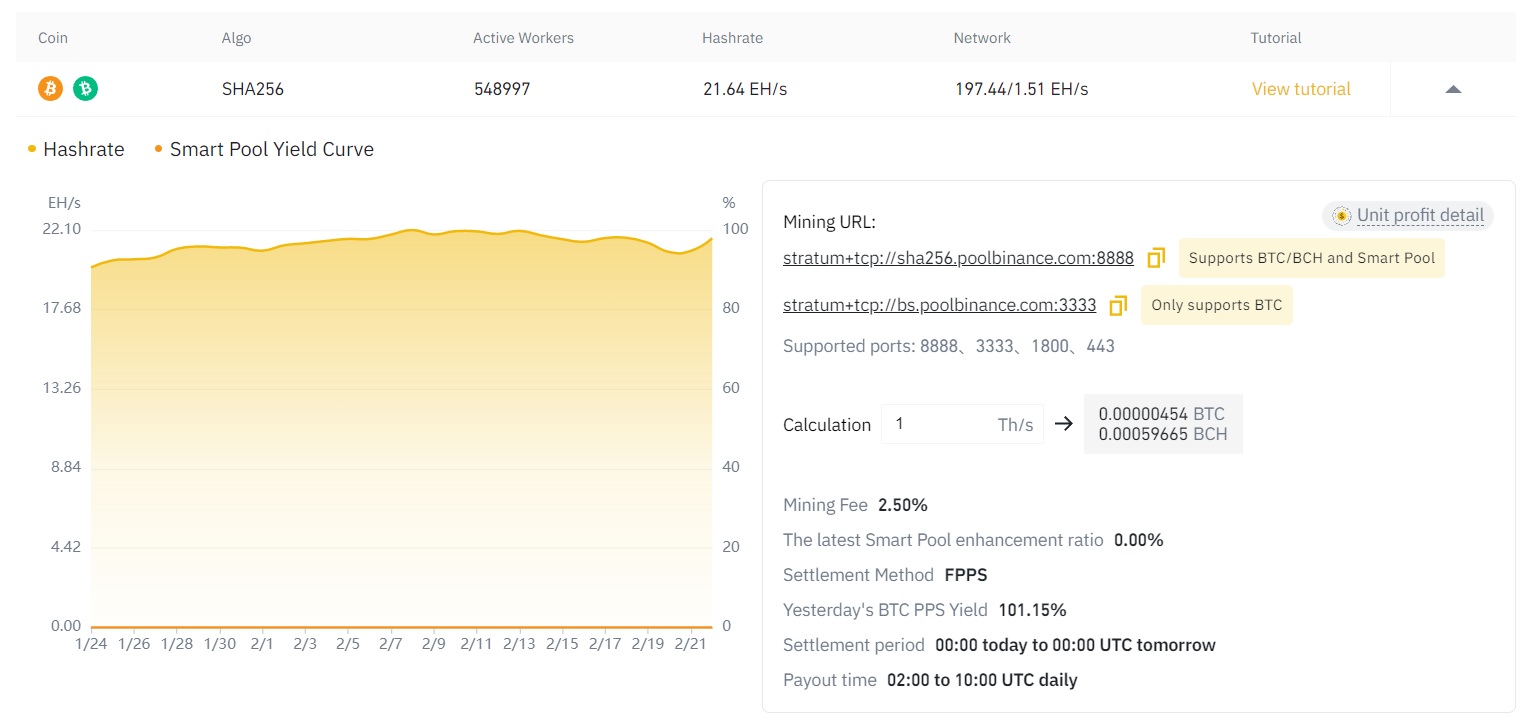
However, the point of a mining pool is that no one member gets access to the entire block reward – rather, the BTC is split proportionally among the pools depending on who contributed the most processing power. Additionally, pool fees can cut into already-tight profit margins. So while a mining pool will almost certainly mine one Bitcoin faster than a solo miner, there’s a world where solo miners earn one BTC faster than those in a syndicate.
8. Mining Hardware
Mining hardware is one of the biggest factors determining how long it takes a miner to acquire a new block of Bitcoin. The reason for this is directly linked to the hash rate. Computers can only solve hash functions through brute force, which requires significant processing power. Therefore, the more processing power within the mining hardware, the greater the chance of solving the hash and receiving a block reward.
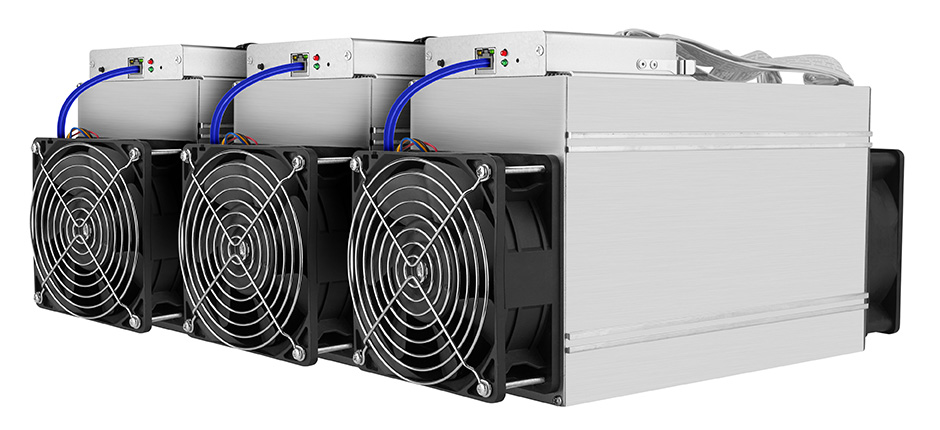
Mining hardware’s proficiency is usually measured by its hash rate – the most prominent ASIC rigs will have much higher hash rates than an everyday gaming PC. However, there are other factors to consider with mining equipment too, especially when building a DIY ASIC miner. How energy efficient the computer’s Power Supply Unit (PSU) and how the Central Processing Unit (CPU) handles high levels of activity can significantly alter the time to mine Bitcoin.
9. Mining Software
Bitcoin mining software can have a small impact on how long it takes them to mine a Bitcoin. Most of the prominent Bitcoin mining software will accomplish the same thing and there will be little difference between certain products. However, if the software isn’t properly optimized for a specific mining rig or strategy, it can slow down the mining process (or derail it entirely). Always ensure to watch an official tutorial (or two) on the best way to set up mining software for various hardware and different blockchains.
10. Temperature
Extreme temperatures can have an impact on Bitcoin mining operations. Take Texas, for example, one of America’s hotspots for crypto mining hubs. During long-lasting heatwaves in mid-2022, several mining businesses had to temporarily shut down as the Texas government asked companies to start conserving energy. As BTC mining is one of the most energy-intensive practices in the world, mining rigs were the first to go in such a situation.
Frequently Asked Questions
Can you mine 1 Bitcoin daily?
No, given current mining conditions, a single miner would stand no chance of mining 1 BTC per day. The amount of Bitcoin that can be mined individually and within a mining pool using one ASIC mining rig is approximately 0.000344 BTC and 0.0003 BTC respectively.
Can you mine 1 Bitcoin in a year?
It’s possible for someone to mine 1 BTC in a year, but they would need multiple top-of-the-line mining rigs running 24/7. For example, running 10 x Whatsminer M30S++ units will mine 1 Bitcoin in 282 days with a 110Th/s hashrate.
How much electricity does mining 1 bitcoin require?
It takes approximately 1,449 kilowatt hours (kWh) to mine a single Bitcoin. This is the equivalent of about 50 days of electricity for the average US family.